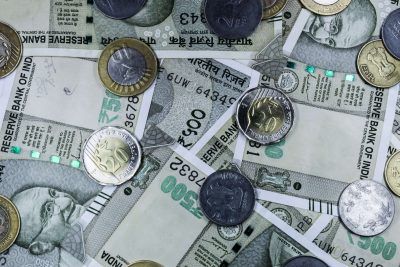The Role of Rupee in International Trade

The foreign policy announced earlier by Union Commerce and Industry Minister Piyush Goyal this year has adopted a long-term focus breaking the usual five-year goal. He further added that the policy would be updated whenever necessary. An area of focus under this policy is to push the internationalisation of the Indian rupee in foreign trade. The move towards internationalising the rupee has been driven by the Indian government’s ambition to boost the country’s economic standing and reduce its reliance on foreign currencies. This is different from using INR to make payments and purchase things in foreign countries.
Internationalisation is a process that involves increasing the use of domestic currency in cross-border transactions. In this context, it simply means that the rupee will be used more frequently for payments internationally. At present, the US dollar, Euro, Japanese Yen and Pound Sterling are amongst the leading reserve currencies in the world. China has had limited success so far in its attempt to internationalise its currency. At present, about 1.7% of transactions happen in INR. The Inter-Departmental Group of the Reserve Bank of India feels that the Indian Rupee has the potential to be used in international transactions given its resilience. Given the sanctions placed by the United States on Russia after the latter’s invasion of Ukraine in addition to preventing further weakening of the Rupee. The need for alternative currency for international transactions has become imperative.
The internationalisation of the rupee offers several benefits for the Indian economy. The first is the reduced transactional costs that occur during international trade. Using the Rupee would allow Indian businesses to bypass the need to convert their earnings into foreign currencies. This protection from currency volatility would not only enable growth but also increase the competitiveness of Indian businesses globally. Furthermore, this would add weight to the Indian economy improving its stature. Moreover, internationalisation can attract foreign investment. According to Moneycontrol, foreign investors may find it more convenient to hold and trade in rupee-denominated assets when the currency is widely accepted globally. This can boost foreign direct investment in India and lead to greater economic growth.
While the internationalisation of the rupee offers numerous advantages, it also comes with challenges and potential risks. One of the main concerns is the volatility of exchange rates. As reported by The Hindu, a group of the Reserve Bank of India (RBI) acknowledges that excessive exchange rate volatility could be a challenge to the internationalisation process. Fluctuating exchange rates can create uncertainties for businesses and investors, affecting their willingness to use the rupee in global transactions.
In order to reap the benefits of internationalisation this would require further opening up of the currency settlement. It would require full convertibility of the currency and a restriction-free cross-border transfer of funds. Presently it only allows on current accounts. They have to do the same for capital accounts to rupee more internationally accessible. Furthermore, it would complicate the monetary policy, along with that maintaining a stable exchange is an obstacle.
The internationalisation of the rupee has significant potential for India’s economic growth. For this to happen policymakers must address all the necessary hindrances and risks while in this process. A successful internationalisation process can position India as a stronger player in the global economy.
Kunsh Khanna, the writer is a student of Economics at KREA University and pursuing his internship with VeKommunicate.
